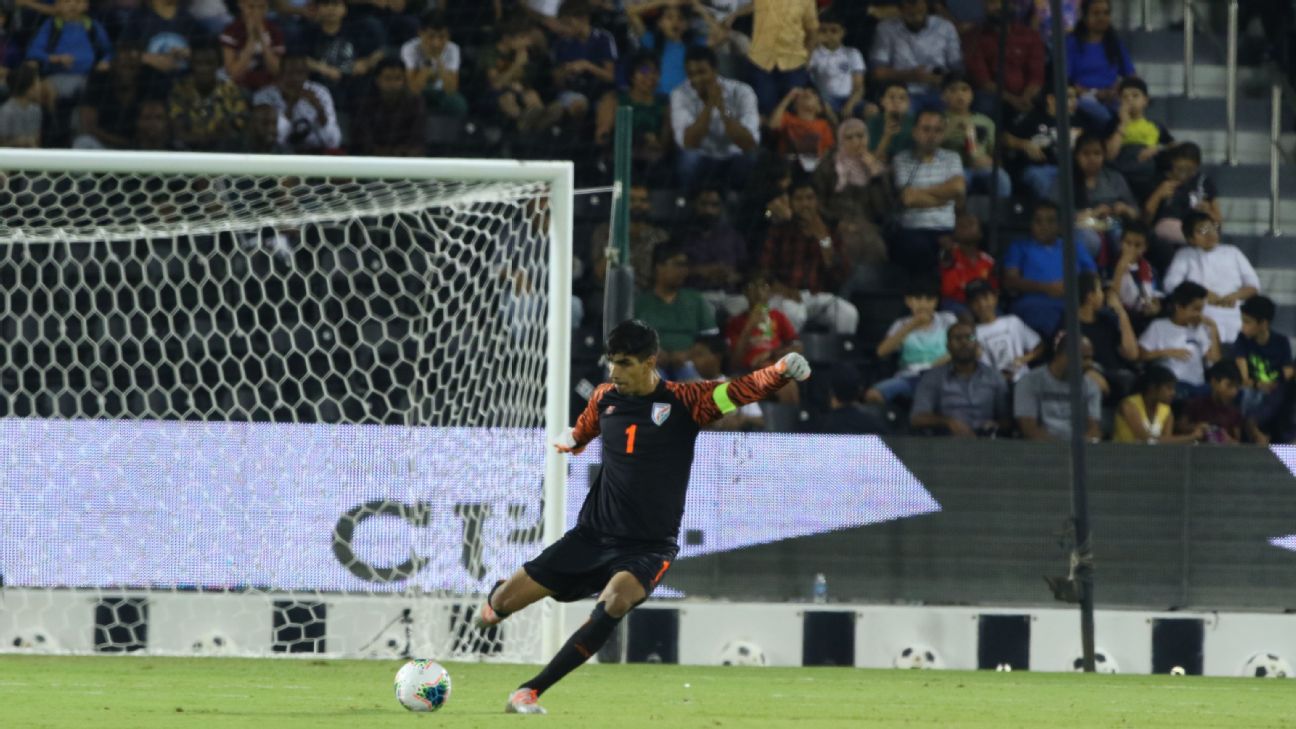It is the 83rd minute of India’s World Cup qualifier against reigning Asian Champions Qatar. The score is 0-0 (and stays that way). Doha is growing impatient.
Over the past year, the home fans have gotten used to seeing their side swat away opponent after opponent. Lebanon. North Korea. Saudi Arabia. Iraq. South Korea. The United Arab Emirates. Japan. Most recently, Afghanistan. High ranked or low ranked, they’ve all come and been dispatched with minimum fuss.
They do not like the situation developing in front of them one bit.
Their team knows it. The press is on, every man in maroon is in the Indian half, but another attack breaks down. The ball falls to Sandesh Jhingan in the Indian box. He looks up, pauses, and calmly plays a five-yard pass to Rowllin Borges. Six passes later — all one-touch, short and between different players — the ball is at the edge of the Qatari box.
That move in itself did not amount to much — a dead-on-his-feet Manvir Singh was easily outmuscled by Bassam Al-Rawi at the end — but it spoke to something else.
A change.
Unafraid, backing themselves, willing to take a risk, unmindful of pressure and of opposition, India had played themselves out of the back while hemmed in against the champions of Asia.
Igor Stimac has been talking big ever since he took charge, and in his previous six games, we saw glimpses of the sweeping changes he wanted to enact. The team sitting higher up the pitch. The ball flowing through midfield instead of bypassing it completely. Chances arising out of creativity shown from within rather than mistakes, or strokes of pure individual (read, Sunil Chhetri) brilliance. Building play from the back.
That first-half performance against Oman in the previous match was undoubtedly the most exciting manifestation of these ideas, but it was this draw against Qatar that showed Stimac was not just all-talk.
Also read:
Ratings: Gurpreet 10/10 as Stimac masterminds a point
India hold firm to clinch famous draw in Qatar
Against Oman, India forced to rue what could have been once again
And he did it by embracing, initially, the pragmatism of old.
Stimac and his team had learned their lessons from five days ago and set about implementing it calmly. Instead of pushing out from the off, they chose to sit deep in their own half, cram the midfield, and allow Qatar space down the wings. This meant that India’s greatest vulnerability — the players’ energy levels falling off a cliff in the last quarter of the game — was addressed as a priority.
With a couple of slices of luck and some disciplined teamwork, India rode out the first 45 minutes well. Crosses were handled with a degree of comfort. The outstanding, near-perfect Gurpreet Singh Sandhu kept out shots from distance with the ease of a goalkeeper at the top of his game. The four-man defence held their line well most of the time, catching Qatar offside often as they tried to play balls in behind. The deadly Almoez Ali (he of one more international goal in 2019 than all of India combined) was marshalled smartly by India’s centre-halves. Sure, Qatari profligacy played a part in the match remaining goalless, but India had a gameplan and they stuck to it.
If the first half was an ode to the best qualities of the India of old, the second half showcased the best of the new.
Anirudh Thapa and Sahal Abdul Samad pushed forward a little from midfield. Rat-a-tat passes were exchanged, the caginess and nervousness of the first half forgotten. Udanta Singh ran toe-to-toe with the reigning AFC Asian player of the year, Abdelkarim Hassan, and bested him a couple of times toward the end. Manvir Singh and Nikhil Poojari ran till they couldn’t anymore, but did so intelligently, their off-the-ball runs opening up spaces for Thapa and Sahal to play passes into, and for Udanta to run into.
The defence played the ball out, allowing Thapa and Sahal to create, relieving pressure on themselves by way of possession rather than simply booting it as far away from their own box as possible. A touch more composure in the final third and…well, Chhetri was always going to be missed.
Now, of course, there was quite a bit of that beaten-to-death stereotype of heart and passion on display, especially in the first half when defenders threw themselves at shots and Gurpreet flew about his goalmouth. But it was the smartness of play and the calmness with ball in the second half that truly caught the eye.
This 0-0 draw keeps India’s hopes alive in the qualifying campaign after that brutal late collapse against Oman, but more than that, it keeps the dream alive. The dream that change may be around the corner, that Indian football need not cower at the first sighting of a healthy challenge.
With results not going their way in the first few games, Stimac’s ideas, and India’s bravery, had appeared utopian, but a dash of old-fashioned pragmatism and a splash of luck have ensured that he will get the time to put his ideas into action.
FC Goa’s Sergio Lobera had told ESPN last season, “I think, instead of criticising Indian footballers, we, the coaches, have to start to put more effort in teaching them. I think the Indian footballer is talented, professional, and has a very good attitude.” Stimac is trusting his players with the ball, trusting their technique and their willingness to learn, trusting their ability to put in the hard yards on and off the pitch.
Stimac is putting in the effort. In Doha, his players showed they are worth it.
